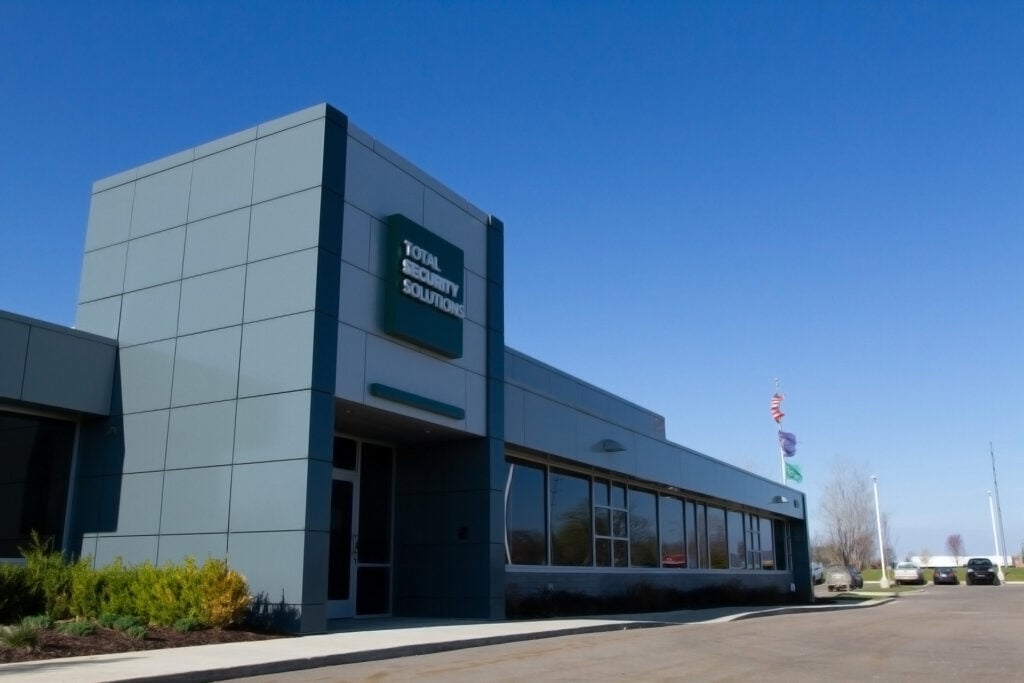BULLET-RESISTANT FIBERGLASS
PANELS AND WALL INSERTS
Our custom bullet-resistant fiberglass panels effectively secure any space, fitting seamlessly into new construction or in addition to existing architecture.
SUPERIOR PROTECTION IN A LIGHTWEIGHT, FLAT RIGID SHEET
Ballistic panels are some of the most practical and versatile products on the market today. They add a layer of security to almost any interior commercial or public building, and can be easily integrated into new construction or existing structures.
We design and fabricate custom bulletproof fiberglass that’s highly functional and discreet, with a lighter weight compared to other bullet-resistant panels and aesthetically-pleasing finishes. In fact, once you install TSS ballistic fiberglass with a custom veneer, it will blend so perfectly with the environment that you won’t even know it’s there.
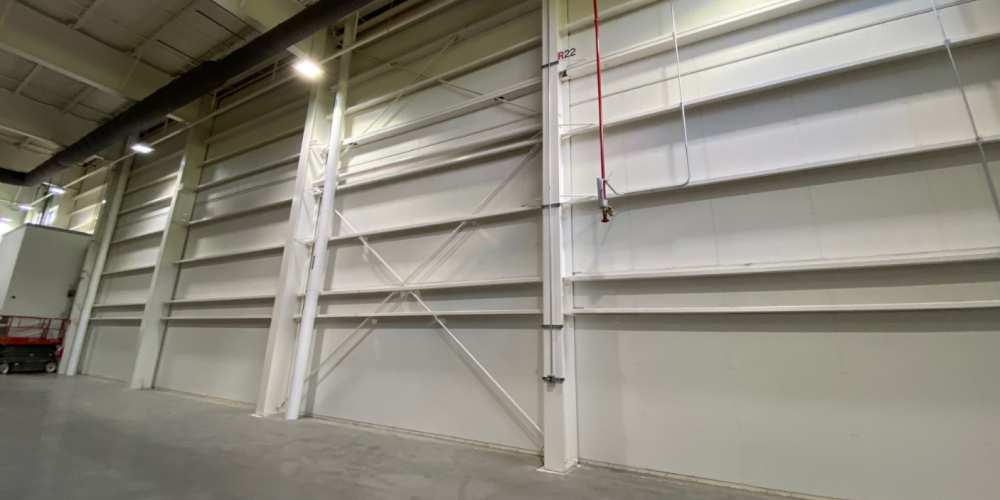
Bulletproof Fiberglass Panels Are a Versatile Solution for Interior Security Projects
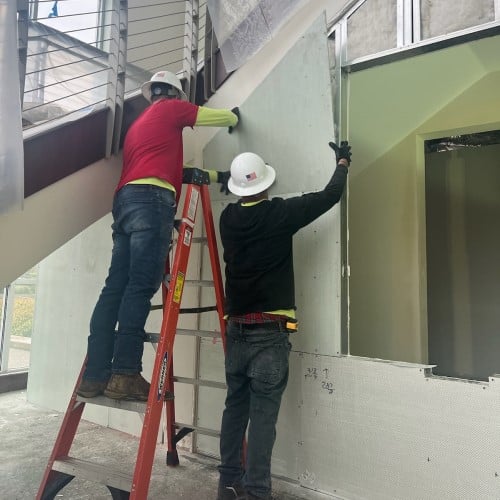
Walls
We can reinforce traditional drywall and other dividers within your workspace. When installed correctly, bulletproof wall panels add a critical layer of ballistic protection to your security system.
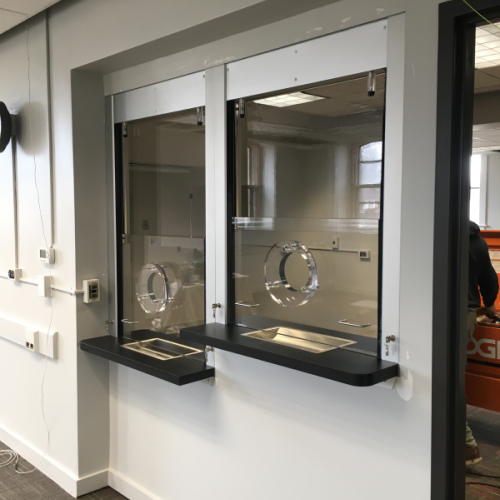
Counters
Protect employees working at high-traffic, high-risk front desks or counters. Ballistic counters match your interior design and integrate seamlessly with the rest of your ballistic barrier system.
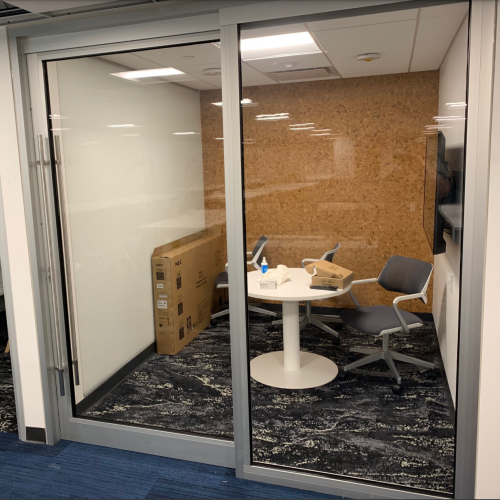
Safe Rooms
Suitable for sheltering people in schools, offices, and more, safe rooms provide peace of mind and protection. Reinforce conference rooms, bathrooms, closets, common areas, and more. For more details about our custom capabilities, please contact TSS.
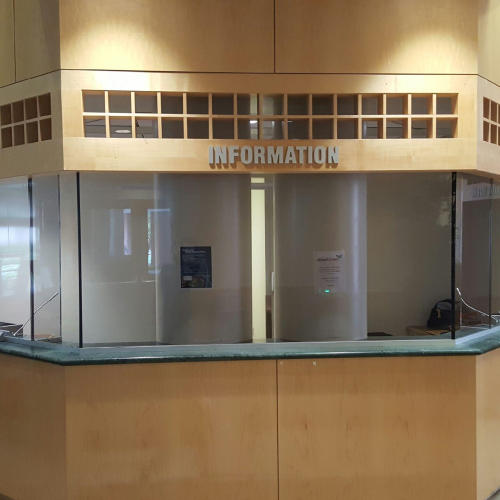
Reception and Security Stations
Regulate traffic flow without sacrificing security with ballistically-rated guard booths and entryway enclosures. Designs merge seamlessly with existing architectural features and don’t damage historical millwork.
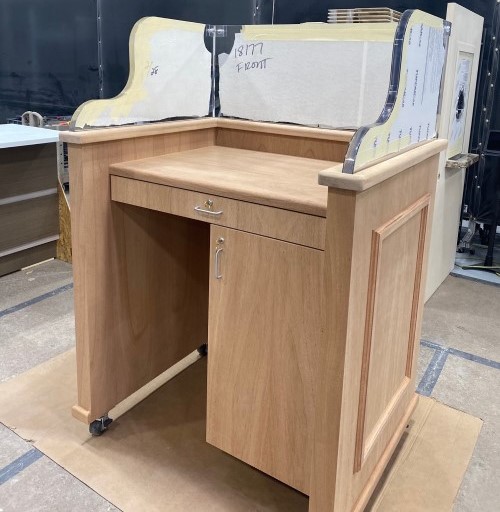
Podiums and Desks
Ballistically-rated, freestanding podiums and desks add a layer of security in courtroom, government, and academic settings. We custom fabricate every podium and desk based on our customers’ unique needs, so to learn more about our capabilities, please contact us.
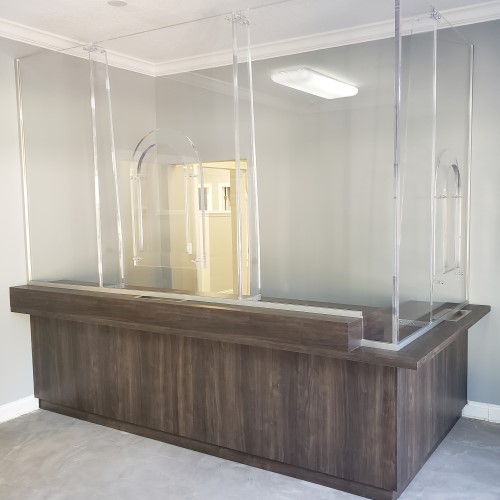
Specialty Bulletproof Desks
TSS has extensive experience fabricating custom solutions for all types of bulletproofing projects. For more information about our bulletproof fiberglass design and fabrication capabilities, and how we can leverage our experience for your project, please contact us.
UL 752 Levels of Protection for a Bullet-Resistant Panel
Our ballistic fiberglass panels offer a comprehensive layer of protection. In general, ballistic fiberglass levels fall into two categories:
- Levels 1-3 are rated to stop a certain number of shots from a variety of handguns
- Levels 4-8 are rated to stop a certain number of shots from a variety of rifles or long guns, such as semi-automatic or hunting rifles.
This video breaks down the different levels in more depth:
Level 3 provides an incredible level of ballistic protection at an accessible price point. However, if you’re concerned about withstanding long gun fire or have other concerns about protection levels, please don’t hesitate to reach out to our team for more information. Our ballistic experts are ready to speak with you!
Bulletproof Fiberglass Specifications and Finishing Options
THICKNESS AND WEIGHT
Like bulletproof glass, ballistic fiberglass is a reinforced product that’s heavier than it might seem. If you’re working with bulletproof fiberglass, you can expect the weight per square foot to be.
Visit our Product Specifications page to access our full list of 3-Part Specs, CAD, Drawings, and Data Sheets.
UL Level |
Thickness (inches) |
Weight (lbs./per sq. ft.) |
|
1 |
0.245 |
2.55 |
|
2 |
0.320 |
3.33 |
|
3 |
0.450 |
4.68 |
|
4 |
1.31 |
13.63 |
|
5 |
1.35 |
14.05 |
|
6 |
0.450 |
4.68 |
|
7 |
1.46 |
15.19 |
|
8 |
1.54 |
16.02 |
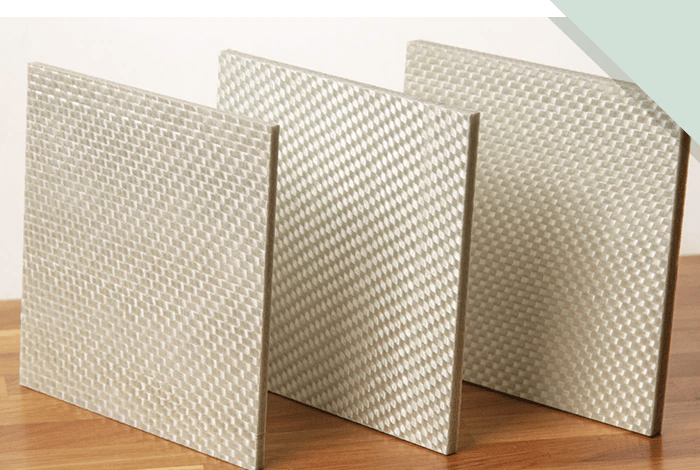
Standard Dimensions
- 3’ ✕ 8’
- 3’ ✕ 10’
- 4’ ✕ 8’
- 4 ✕ 10’
PROTECT YOUR PEOPLE WITH A HOLISTIC, SYSTEMS APPROACH
No single product is enough to protect what matters most. A systems approach which considers how everything works together, is a comprehensive strategy for designing your ballistic barriers.
Need More In-Depth Resources?
Download our free ebook, the Ballistic Fiberglass Solutions Guide.
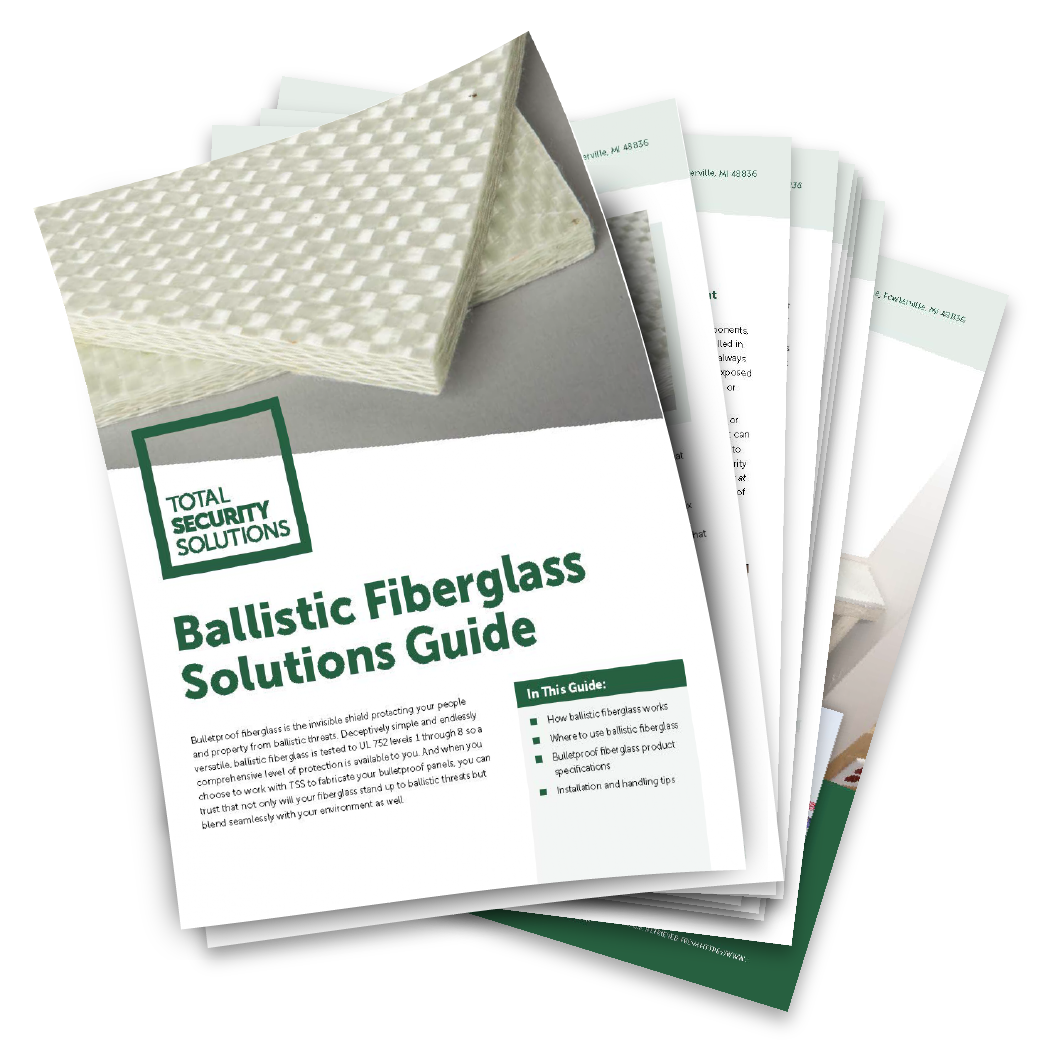
Is Fiberglass Bulletproof?
A common question we often get is if fiberglass is bulletproof. The answer is yes—but only when it’s carefully fabricated to withstand ballistic or other impact. Fiberglass in other forms, such as insulation, will not stand up to bullets or blunt force impact.

How Are Bullet-Resistant Wall Panels Made?
The fiber arrangement and type of matrix give fiberglass its strength. Fiberglass cloth mats are soaked in thermoset polyester resin to create multiple layers of flat, rigid sheets, providing ballistic panels strong enough to stop a tight cluster of three 9mm bullets from a pistol. The design of the fiberglass also prevents fragmentation. Through a controlled delamination process, the panels absorb and disperse the energy from ballistic impacts and contain the bullets within the layers.
Frequently Asked Questions About Fiberglass Ballistic Panels
What are ballistic panels made of?
Ballistic panels are typically made of bullet-resistant fiberglass. They’re created by saturating layers of synthetic fiber mesh with resin, then pressing and baking them into a dense, rigid sheet.
When struck by a bullet, the panel’s layers begin to separate (a process called delamination), which absorbs the bullet’s energy and slows it down. The fiberglass mesh acts like a net, spreading out the impact and preventing the bullet from passing through to the protected side.
This combination of strength and energy absorption makes fiberglass panels a reliable choice for lining walls, counters, doors, and other critical areas that need discreet ballistic protection.
How effective is a ballistic fiberglass panel?
Even a panel just ¼-inch thick can stop at least three 9mm bullets fired from a handgun. As panels get thicker, their stopping power increases, allowing them to withstand multiple shots from higher-caliber firearms.
Where can ballistic panels be installed?
Ballistic fiberglass panels are highly versatile and can be installed almost anywhere a stronger line of defense is needed. The most typical applications are within walls, mounted behind drywall in new construction or retrofitted over existing walls to create bullet-resistant interiors that offer excellent protection.
They can also be used to reinforce:
-
Reception desks and counters – lining the front, sides, and countertop to give staff a protected space
-
Partitions and offices – creating discreet, secure areas inside a facility
-
Safe rooms or secure corridors – strengthening exit routes and containment areas
Customized panels blend seamlessly with surrounding architecture in commercial buildings, from government facilities to financial institutions.
What makes up a complete bullet-resistant barrier system?
- Transparency (Bullet-Resistant Glazing): Often called “bulletproof glass,” though it’s usually acrylic, polycarbonate, or glass-clad polycarbonate. Protects transaction windows and entry points.
- Bullet-Resistant Fiberglass Panels: Installed behind walls, counters, or kickspaces to stop bullets from penetrating areas that standard drywall cannot.
- Voice Systems and Passers: Includes talk-thru baffles, intercoms, trays, or package passers for safe communication and transactions.
- Ballistic Doors: Secure entry and exit for staff while maintaining barrier integrity, with designs that range from steel to wood veneer.
- Ballistic Framing: Specialized framing engineered to hold ballistic glass, doors, and fiberglass in place under impact.
Why Choose TSS As Your Custom Security Solutions Provider
When you choose TSS, you’re choosing a company with decades of experience consulting, designing, fabricating, and installing ballistic barriers around the country. We have worked with countless industries and specialize in adding Safety + Aesthetics to any space. If you’re looking for support for your bulletproofing project, TSS is your end-to-end partner.
Consulting
If you know you need to add a layer of bulletproof material to your space, but you don’t know where to start, call us. Our security experts can help you make a practical plan for increasing your security.
Custom Design
Bulletproof barriers should fit seamlessly into your space. Our design capabilities make sure you get the perfect fit every time—even when you need to accommodate historical millwork, create a mantrap, or some other custom considerations.
In-House Fabrication
All of our products are fabricated in-house by expert craftsmen. Nothing is off the shelf—ever. This results in a superior product that’s perfect for you and your needs.
Expert Installation
Once fabrication is complete, our in-house team of installers are ready to travel to your location to ensure the product is installed correctly. Plus, we ensure your business’s continuity by completing installations overnight.
We Engineer Confidence

Unlike competitors who sell off-the-shelf products, we design, build, deliver and install custom bullet-resistant barrier systems that are right the first time. Our Proven Process ensures your project is tailored to your exact specifications, manufactured in-house for quality control, and often installed in a single day. That means no delays, no costly change orders, and no workarounds on-site. It’s why architects, contractors, and security leaders have trusted us to protect more than 30,000 buildings in over two decades.
TSS Is Ready to Help You Reinforce Your Space With Ballistic Fiberglass
Our bullet-resistant fiberglass panels are just one part of a comprehensive ballistic system. We work closely with architects, builders, and security directors to develop a systems approach to security that includes many different elements working together. Whether you’re working on a new build or upgrading your space to strengthen existing walls, we’ll help you integrate bullet-resistant wall panels for maximum effectiveness and minimal disruption.
In many cases, we also incorporate forced-entry rated materials to help delay and deter unauthorized access when ballistic resistance isn’t the only concern.
Ready to get started? Our team of experts is ready to help. You can contact our office at 800.513.1468, or fill out this simple form on our website. Or, if you’re still researching your project, our Ballistic Education Center has a library of resources to help you learn more about your options.